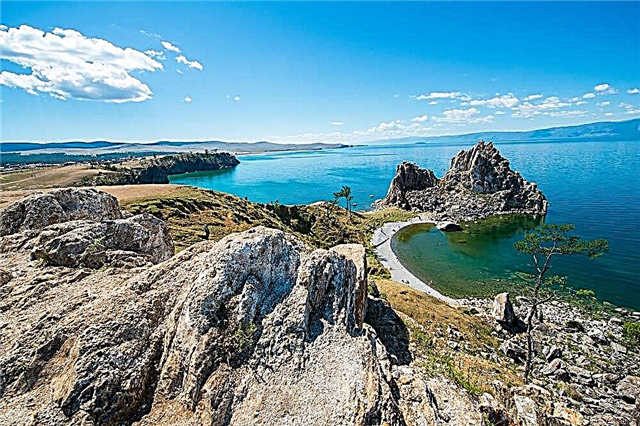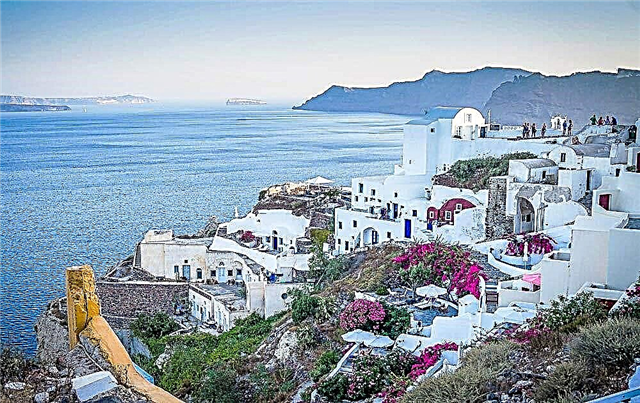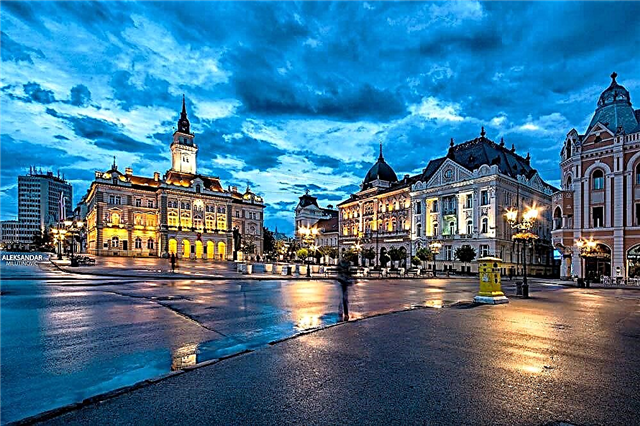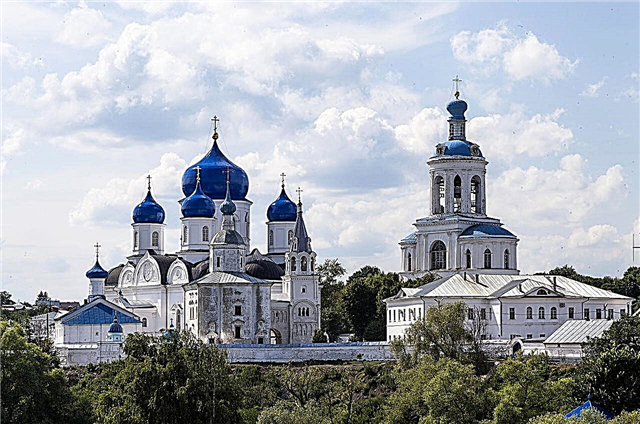The Vladimir region played an important role in a number of historical events. At the stage of civil strife, the Tatar-Mongol invasion, the baptism of Rus, as well as its unification into one powerful state, local monasteries performed a number of functions. Some of them served as outposts defending cities. Others were responsible for the moral side of life in these lands. Still others were engaged in education.
After the revolution, not a single monastery in the region was fortunate enough to remain open. With the misuse of the territory, it was only by a miracle that the architectural complexes of the cloisters and some shrines were preserved. For example, in the Trinity Monastery, the relics of Peter and Fevronia of Murom, the patrons of marriage, are kept. And the Spaso-Evfimiev Monastery, not only became part of the Museum-Reserve, but also came under the protection of UNESCO.
Operating monasteries of the Vladimir region
The most famous male and female monasteries in the region.
Trinity Monastery in Murom
The exact date of the foundation of the Murom women's monastery is unknown, but it appeared not earlier than the middle of the 17th century. A monastery was formed around the temple of the same name. In Soviet times, until the 70s, the premises were used as a warehouse and apartments. Later, the architectural ensemble came under state protection. The monastery was restored in the 90s. The shrine is the relics of Peter and Fevronia - patrons of family, marriage and love.
Address: Murom, pl. Peasant, 3 / A

Murom Spaso-Preobrazhensky Monastery
It stands on the left bank of the Oka and belongs to the territory of Murom. The construction of the main temples and cells took place in the 16th century. The closure after the revolution was accompanied by the destruction of the necropolis. The restoration began in the 90s, not without the personal participation of Patriarch Alexy II. The buildings are listed as architectural monuments of federal significance. The shrine is the miraculous icon "The Hearted One" brought from Athos.
Address: Murom, st. Lakina, 1 / A
Website: http://www.svyto.ru/

Bogolyubsky monastery
A monastery was founded in the village of the same name. In the past, there were the possessions of a local prince, who was killed in his own house. The monastery began to form in the XII-XIII centuries. In the 30s of the last century, it was closed. The nuns re-settled within the walls of the monastery only in 1997. There is a holy spring on the territory. There is a free canteen for those in need. It has the status of a cultural object of federal significance.
Address: pos. Bogolyubovo, st. Lenin, 51V
Website: https://www.sv-bogolubovo.ru/

Intercession Monastery in Suzdal
Stands on the banks of the Kamenka in Suzdal. Founded in the XIV century, while the current knowledge was built a couple of centuries later. In the monastery at different times there were noble inhabitants, often tonsured into nuns by force. After the restoration, which began in the 90s, the complex came under the protection of UNESCO. Now sewing and icon painting workshops work here. The monastery is open to pilgrims, but overnight stays are not permitted.
Address: Suzdal, st. Pokrovskaya, 76
Website: http://spokrovmon.ru/

Monastery of the Robe
It has existed since 1207 on the territory of Suzdal. At that time there was already a monastery nearby and they were gradually merged into one. The architectural ensemble underwent a serious restructuring in the 17th century. Little remained of the classical look of churches and outbuildings in the 30s of the last century: the bells were transported, the buildings were partially blown up, the property was stolen. The restoration has been going on since 1999.
Address: Suzdal, st. Lenin, 79

Annunciation Monastery in Murom
Founded by Ivan the Terrible. The king wanted to mark the place where in the past there was a wooden church and the chambers of Constantine - the prince who baptized the city. After the revolution, the relics were taken out of the monastery and transferred to the museum. Although the monastery was closed, one of its churches remained intact. Until 1991, it was the only temple in Murom where services were held. Now the monastery has been restored and is operational.
Address: Krasnoarmeyskaya, 1

Annunciation Kirzhach Monastery
Founded in 1358 in Kirzhach by Sergius of Radonezh. After the reform of Catherine II, the monastery lost its status and turned into a parish. In the 30s of the XX century, the main temple was blown up. In 1995, a decision was made to restore the monastery, only now it has become a female one. New bells were cast. The main objects are a cathedral, two churches and a chapel. The shrine is the relics of the Monk Roman of Kirzhach.
Address: Kirzhach, st. Gagarina, 27

Znamensky monastery
Initially, the monastery was for men. It has been leading its history since 1598. 70 years later, the first stone church appeared in Gorokhovets. Since that time, there has been a systematic replacement of the wooden architectural ensemble. Monastic life subsided here after the revolution and revived in the 90s. The monastery became female. Orthodox Christians of both sexes are accepted as assistants; permission must be obtained before arriving.
Address: Gorokhovets, Znamenka section.

Dormition Alexander Monastery
The nunnery dates back to 1651. The nuns supported themselves: they worked in the gardens and in the barnyard. After the revolution, the buildings managed to survive, as a museum exposition was located inside for some time. Since its restoration, the monastery has been an attractive place for pilgrims due to its large collection of shrines. Among them: the venerated icons of the Passionate and the Tree of Jesse, as well as arks with particles of the relics of saints.
Address: Alexandrov, st. Soviet, 23-25
Website: http://alexandrov-obitel.ru/

Theotokos-Rozhdestvensky monastery
Built in Vladimir at the end of the 12th century. He was especially revered, but lost his influence and, by the decree of Catherine II, was transformed into the residence of bishops. Already in our century, the monastery began to be restored. The reason is the unique architectural complex headed by the Nativity of Christ Church. Sometimes the monastery walls are mistaken for the fortifications of the local Kremlin, which is an erroneous conclusion.
Address: Vladimir, st. Bolshaya Moskovskaya, 68
Website: http://monastery.vladimir.ru/

Nikolsky monastery
There are discrepancies regarding the time when the monastery was founded in Gorokhovets. Either it already existed under Ivan the Terrible, as the chronicles hint at, or it was founded by a letter from Mikhail Fedorovich. The Trinity-Nicholas Cathedral is the main temple of the monastery, it is also its first stone building. During the Soviet period, the territory was used for other purposes. In the 90s, the lands were transferred to the ROC and the monastic way of life was restored.

Sretensky monastery
It was founded in the middle of the 17th century. The territory of the monastery was located in the central part of Gorokhovets. The monastery existed until 1764. Already in our century it was decided to restore it. However, so far, it has not been possible to return to the previous size and value for the region. Divine services in the main church are not held on a regular basis. Due to the lack of cells, the first floor of the former almshouse was reserved for the nuns.

Annunciation Semibratsky Monastery
Founded in 1641 in Vyazniki with the blessing of Tsar Mikhail Fedorovich. The territory has been growing for several decades. In addition to part of the river, the monastery owned a lake and vast vegetable gardens. It closed in 1921. Although originally masculine, it was reborn as feminine in 2000. Shrines - revered icons, particles of the relics of martyrs and saints, including Seraphim of Sarov and John Chrysostom.

Resurrection monastery in Murom
It is located in Murom near two more monasteries. The nunnery was destroyed in the 17th century. A century later, it was closed, and the churches were transferred to the cemetery. During the Soviet era, the graves were also destroyed, turning the territory into a football field. The architectural ensemble has miraculously survived. The misuse of buildings stopped only in the 90s, when they were handed over to restore the diocese.

Michael the Archangel Monastery
It is located within the earthen rampart of the Yuryev-Polsky Kremlin.Dated to the XIII century, but the stone buildings, which have survived in part to this day, were built much later. During the restoration work, the Georgievskaya wooden church was moved here - the only surviving object from the original architectural complex from the village of Yegorie. Full-fledged monastic life was re-formed here by 2006.

Dormition Knyaginin monastery
The monastery got its name because of the wife of Prince Vsevolod the Big Nest. She was sick a lot and asked her husband to found a monastery in 1200, where she was tonsured. Subsequently, a burial vault for the princes and their wives was organized on the territory nearby. The monastery was closed from 1923 to 1993. For some time there was a museum inside. Of the shrines, only a particle of the relics of Abramius of Bulgaria has survived.

Vasilievsky monastery in Suzdal
Located on the outskirts of Suzdal. Named in honor of St. Basil the Great. The monastery is fenced along the perimeter, and the entrance is through the Holy Gates. They, as well as the cathedral and the refectory church, date back to the 17th century. Shrines: a particle of the relics of Basil the Great, the grave of Blessed Eudoxia of Suzdal, the relic "All the saints who shone in the land of Vladimir." There is a mini-hotel for pilgrims.

Holy Vvedensky Island Monastery
It was founded in 1708 on the lake of the same name by the monks of the Anthony Hermitage. The brethren chose the Athonite charter for themselves, a place remote from the bustle of the city that allowed them to observe all the strict rules. Pilgrims were allowed to stay in the monastery for no more than three days. From 1918 to 1995, the monastery was closed. Reborn as a female. The territory continues to be developed, as it was used for other purposes and fell into disrepair.

Alexander Monastery in Suzdal
Built on the banks of the Kamenka River in Suzdal. There is a legend about the creation of a nunnery in 1240 by Alexander Nevsky. On the territory you can find the graves of two princesses. The reform of Catherine II ended the days of the monastery's existence. The value of the architectural ensemble, in need of restoration and protection, prompted the Russian Orthodox Church to revive the monastery in 2006. Only now it is intended for male monks.

Stefano-Makhrishchi monastery
Built on the banks of the Molokcha River and named after the founder. The monastery was ruined during the Time of Troubles. It was rebuilt, but it did not catch up with its former glory. After 70 years of inactivity, it was restored as a female. The destroyed temple of St. Stephen was recreated close to the original. Newly painted icons appeared that adorned the massive iconostasis. From the old objects, the gate church and the church of Peter and Paul have been preserved.

Vvedensky-Nikonovsky monastery
Nikon of Radonezh spent his childhood here, as his parents' house was located on this territory. Later, a convent was formed. The monastery is located in the city of Yuryev-Polsky in a place of close building, so it burned several times. Warehouses were placed in the temples after the revolution. In 2001, the monastery was restored as a man's. Work on the construction of temples and cells was delayed due to insufficient funding.

Peter and Paul Monastery
Refers to the city of Yuryev-Polsky. Most likely, it was founded by a local metropolitan at the turn of the 17th-18th centuries. A little later, additional lands for development were transferred to the jurisdiction of the monastery. Now, three churches and a large bell tower have been rebuilt on the territory. The main work on the return of the nunnery to its former splendor started only in 2010. The objects have been preserved in different ways, which complicated the reconstruction.

Lucian's hermitage
Named after the founding monk. Lucian settled here in 1650. After his death, the monastery began to develop rapidly. And after the revolution and until 1991, the deserts were officially closed. For several years, the Russian Orthodox Church was deciding whether or not to engage in restoration. In 2000, the monastery was declared active. The current status is a cultural heritage site of regional significance. The icon of the Nativity of the Virgin is especially revered.

Holy Bogolyubsky Alexievsky Monastery
The first settlement of monks arose on the remains of "Kurmysh" - a small settlement. Since the 13th century, the monastery has become one of the outposts of Vladimir. For this reason, he suffered from raids. Subsequently connected to another abode. After closing, services continued in the main church. In 1994 he was returned to the Russian Orthodox Church, and in 2003 he moved to the buildings of the former Constantino-Eleninsky parish.

Nikolo-Volosovsky monastery
Evidence for the existence of a monastery in Volosovo goes back to the 15th century. The complex consists of three churches, each with its own style, but the buildings look harmonious. Initially, the monastery was founded as a male one, but before the revolution it was transformed into a female one. The Nikolsky holy spring belongs to the territory of the monastery. Water can be drawn without hindrance, a convenient approach and baths have been made.

Smolensk Zosimova hermitage
The monastery is named after its founder. Shimonakh gathered followers around him, who became the monastery's brethren at the end of the 17th century. Distinguished guests, including the sister of Peter I, visited the desert. After the revolution, the monastery did not last long as an artel and was closed until 1992. Shrines - the relics of Zosima and the revered icon of the Mother of God of Smolensk "Hodegetria".

Sorrow Monastery
It began as a women's community in the village of Khmelevo. Its center was a wooden church built in 1903. The carved iconostasis, which contained 73 icons, was also noteworthy. When the monastery was liquidated, all the icons, except one, disappeared. During the reconstruction of the monastery, it was in honor of the icon of the Great Martyr Catherine that the main temple was named in 2000. The restoration also affected the park territory within the boundaries of the monastery.

St. Nicholas Monastery
One of the most modern convents in the region. It has been located in the village of Novoye since 1995. In the past, churches and communities existed on this site, but it was impossible to create a full-fledged monastery. Pilgrims are attracted by 5 icons, each of which is considered miraculous. Iberian was created here, and all the rest were brought from other cities: this is how the shrines were saved from destruction.

Kosmin Yakhroma Monastery
The monastery in the village of Nebyloe appeared at the end of the 15th century. A complex of several churches and outbuildings grew out of a stone church, which was dedicated to the icon of the Dormition of the Mother of God. Even during the closing period, the premises were kept in good condition. In 1995, the restoration of monastic life began. Valuables - particles of relics, including the remains of the Optina elders, and icons of the 16th-18th centuries.

Monastery of Saint Euthymius
It belongs to the monasteries of Suzdal and is part of a large museum-reserve. It has existed since 1352. The restoration of St. Nicholas Church was carried out back in the 60s of the last century. Most of the wooden elements have been replaced already in our century. The architectural complex is under the protection of UNESCO. The archimandrite building and the belfry are noteworthy. The main icon is the venerated copy of the Korsun Most Holy Theotokos.












